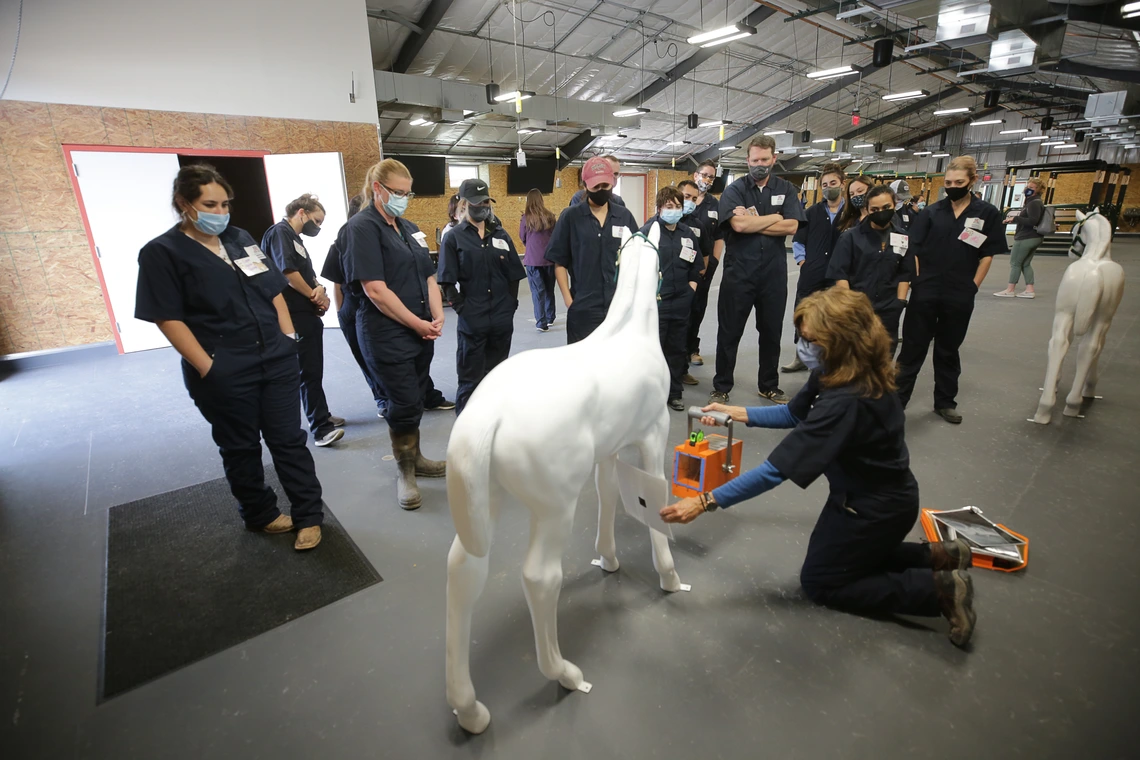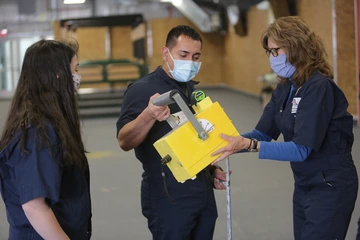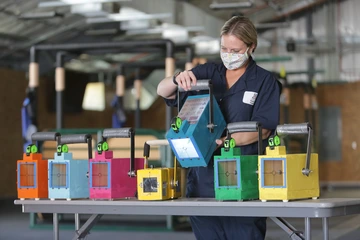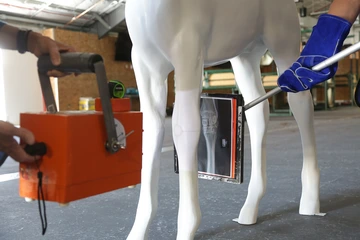Taking the Reins in Equine Medicine
The University of Arizona College of Veterinary Medicine is home to excellent equine medicine education and passionate staff and faculty dedicated to providing dynamic educational opportunities.

The University of Arizona College of Veterinary Medicine is home to excellent equine medicine education and passionate staff and faculty dedicated to providing dynamic educational opportunities. Dr. Gayle Leith, an Associate Professor of Practice, owned and operated an equine veterinary practice for over 30 years before becoming a professor to share her knowledge and expertise with future veterinary professionals. Today, Dr. Leith is a leading faculty member educating the next generation of veterinarians, who will lead the charge for large animal medicine in the state of Arizona and beyond.

Dr. Leith began her equine career as an intern in Arizona after earning her DVM at the University of Wisconsin—Madison in 1988. Following her time as an intern, she eventually moved up the ranks as an associate and eventually bought the practice with a fellow veterinarian. She continued practicing equine medicine and developing her ‘horse sense’ in Arizona for the next 30 years until joining the College of Veterinary Medicine in 2019. Opportunities to educate in casual settings had proven she was good at teaching others, and she also found it fulfilling. Now, as an educator, she enjoys introducing students to equine medicine and giving them the experiences necessary to make well-informed decisions about career specialties. Many students enter veterinary school with a specialty in mind, but Dr. Leith believes it is important for students to keep exploring.
“I tell [students] all the time, ‘Learn all the things you can, expose yourself to whatever you can, because you may change your mind.’ A lot of [students] worry about whether they would have the skill set to work in mixed animal practice, so a lot of them come in thinking they need to have a really strong background in equine, meaning [having] grown up around horses or ridden their whole life. I say, ‘No, no, you do not.’ If you just go handle some horses at a riding program maybe, and just be around them and handle them, you’ll know. Our students are smart people. When they're exposed to it, they're going to know if they want to do it and they're intrigued by it. Just find some way to gain more handling experience.”

This exploration mindset guides our faculty and clinical skills team as they work together to discover the best possible ways for students to develop vital skills.
During Dr. Leith’s time as a veterinary student, clinical skills were not taught before students began working with live animals in real-life medical situations. Arizona’s program, however, builds clinical skills into its curriculum from the very beginning of veterinary school. These hands-on experiences give students essential opportunities to simultaneously learn and apply their conceptual knowledge to real-life situations.
“When I was in vet school, we had three years of strictly classwork and then we were in the clinic. And so what I like about this program is the clinical skills and professional skills aspects. I love the models we're building and the actual hands-on [learning]. For example, recently we were teaching about dystocias, which is abnormal presentation of a baby. And we had two cow models and a bendable calf model. They’re life-size. [Several other faculty members and I] were positioning the fetus in various positions and having the students place their hands in there and tell us what they could feel. We had them describe the position of the fetus and say whether the cow could deliver, and if not, how they would manipulate [the calf]. I didn't have that in vet school. So, there's a lot of hands on. And the technicians are building amazing models, too.”
Our technicians aid student learning experiences by regularly placing themselves in students’ shoes and considering how they might share technical skills they gained in the field as students learn how to carry out procedures for the first time. For example, Animal Care Manager Lisa Hallam and a Clinical Skills team leader created an abdominocentesis model to allow students to learn to carry out a vital procedure on a model horse. Giving students a chance to develop essential skills for working with large animals on a model before live-animal interactions helps them to be more capable and confident when they care for these animals hands-on. Dr. Leith ensures students understand the daily realities of working with horses and shares insight earned through her years of professional experience.

Dr. Leith’s thorough history of work in equine medicine means she understands where students need specialized practice. For example, when taking x-rays on equines, veterinarians must utilize a bulky radiology box and carefully position it to collect useful images. Dr. Leith recognized the difficulty of learning this procedure as a new graduate and sought a better way for students to preemptively prepare for real-life fieldwork. Acknowledging the importance of efficiency, Dr. Leith explored new ways to offer hands-on teaching experience for students to learn how to maneuver the boxes before examining live horses with actual radiation. Her creativity ultimately led her to create model radiology boxes that allow students to learn proper placement and handling to ease any anxiety or discomfort a horse may be experiencing. Students practice holding the x-ray machines and placing the imaging plate in particular positions. Faculty calls out the image they want students to obtain, and students aim the model radiology box in the corresponding position. The boxes offer true-to-life experience in part because they are similar in weight to the radiology boxes veterinarians use in the field. The boxes are equipped with lights with ‘crosshairs’ that allow students to gain a sense of how far out they need to hold the radiology box and where to hold it to ensure a useful image is collected. Although no radiation is present in the prototypes, students don their lead aprons, gloves, and dosimeter badges and follow all protective procedures for an x-ray. Dr. Leith said, “It is important for them to follow radiation safety procedures as they are learning, so they develop the muscle memory of doing it the right way.” As her prototype is the first of its kind, she has begun working with Tech Launch Arizona, the university’s commercialization arm, on strategies to bring the invention to the marketplace so it might have impact for other veterinarians and their clients and patients. Our students are the first to utilize this innovative learning aid.
Throughout her career in equine medicine, Dr. Leith has been able to put her passion into practice, and she hopes to share that same passion and possibility with her students. When asked to describe the best part of working in equine medicine, she shared,
“I just really enjoy anything to do with horses. I love dentistry. I love reproductive care. I love repairing lacerations and making them heal nicely. I enjoy the individualized care in equine medicine, and I greatly enjoy making connections with clients. And I love getting students excited about all these things.”
With our faculty and staff’s expertise, passion, and innovative mindset, our students are ‘put through their paces’ and skillfully guided through the world of equine medicine.
